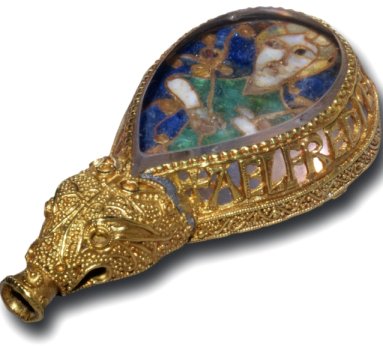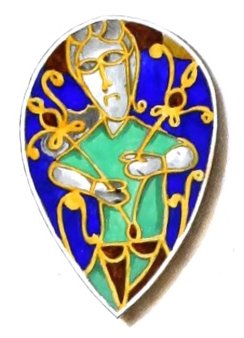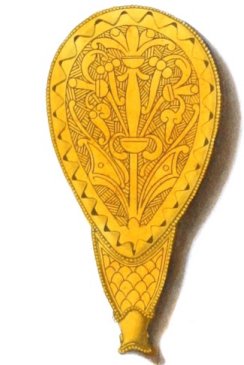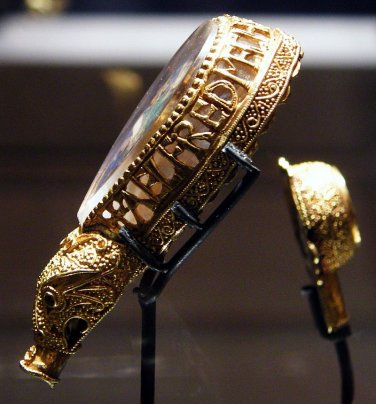
Perhaps the most beautiful and highly prized of all the treasures in the Ashmolean Museum in Oxford is the Alfred Jewel, discovered in 1693 in rural Somerset. It dates from the late ninth century. The name it is known by suggests something worn by the wealthy, but this was not its function.
The Alfred jewel is an aestel. It original would have had a rod or stick, probably of wood, coming of the socket at the base. This was used as a pointer to help reading manuscripts, avoiding the need to touch the surface with dirty or greasy fingers.
Description
The Alfred Jewel consists of a clear piece of rock crystal with a cloisonné enamelled figure beneath it, set in filigree gold. Below the figure the gold setting becomes the head of an animal. This surrounds the socket for the pointer. The side view makes the animal image clearer: a wild boar is a suggestion.
The identity of the figure has been the subject of much debate. Suggestions include Anglo-Saxon saints such as Cuthbert, though most scholars see it as an image of Christ. A further suggestion is that the figure is the personification of sight, the sense that the aestel is helping with. Modern observers might consider this a very likely interpretation, as the figure appears to be wearing glasses! The rear is a gold plate decorated with acanthus leaves.
Inscription
The gold setting has an inscription at the side, ‘aelfred mec heht gewyrcan’, meaning ‘Alfred ordered me to be made’. It is thought that an aestel was included when King Alfred sent all the bishops on his kingdom a manuscript copy of his translation of Pastoral Care by Gregory the Great.

Clearer view of thecloisonné figure

Rear view

Side view

Inscription
Archaeology has discovered more anglo-saxon aestels, but none are quite as grand as the Alfred Jewel. Head for page two to see them.